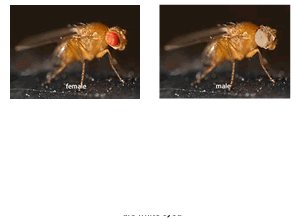Family relationships can be represented in diagrammatic form. Such diagrams are known as pedigrees.
Pedigrees use symbols, such as circles for females and squares for males to represent people and lines to represent family relationships.
Pedigrees make it easier to visualise inheritance of dominant or recessive genetic traits. A sample pedigree is shown on the right. Horizontal lines connecting male and female indicate mating, while vertical lines connect parents to offspring.
Consider the pedigree shown on the right it shows the inheritance of a specific trait.
1) Parents 1 and 2 mate and have
offspring,
and
2) of the children are affected.
3) Parents 1 and 2 can be termed
4) This trait is most likely
5) Child 3 must have inherited
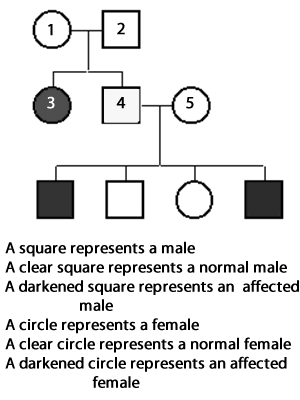
6) The pedigree on the right shows a recessive genetic disease. The normal gene is given the symbol (A) while the recessive gene is given the symbol (a).
a) Write the genotype of each individual. Solution
b) Is it possible that this pedigree can be for an autosomal dominant trait as well? Solution
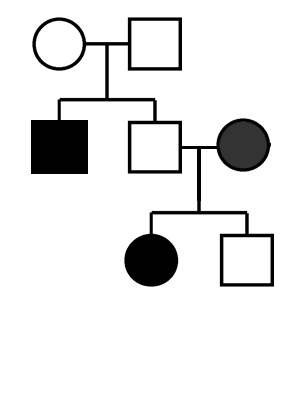
7) Consider the pedigree on the right
a) Is it possible that this pedigree is for an autosomal recessive trait?
b) If so, what are possible genotypes of the father in the first generation?
c) Give the possible genotypes of all the individuals.
Solution
d) Which two terms best describe the offspring of the first generation?
and
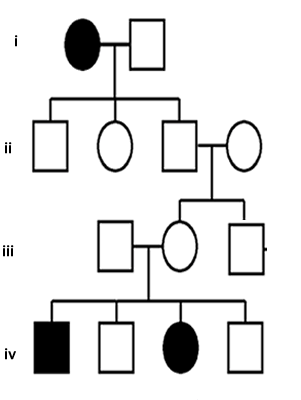
9) The pedigree, on the right, shows the inheritance of a recessive disease caused by the allele (b). Those with the normal allele (B) do not show the condition.
a) What is the genotype of both the mother and father of the first generation?
b) What is the genotype of an individual with the condition?
c) What is the genotype of an individual who is a carrier?
d) Which word best describes a carrier?
e) Which word best describes an individual with the condition?

Recessive inheritance is when both matching genes are abnormal for the particular trait and hence the disease is expressed. If one gene in the pair is abnormal, the disease does not occur, or at the very least, it is mild. A person who has no symptoms of the disease but has one normal and one abnormal gene is called a carrier. A carrier can pass the abnormal gene to the next generation.
If the gene for the trait is on the X chromosome it is known as an X-linked gene. Hemophilia is an X-linked recessive disease. The symbol XH represents the normal allele on the X chromosome and Xh represents the recessive allele on the X chromosome.
The picture on the right shows the genotype of a mother and father.
a) What is the genotype of the:
i) normal son
,
ii) normal daughter,
iii) carrier daughter,
iv) hemophiliac son.
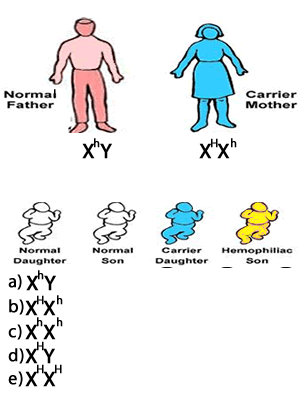
The offspring that resulted were all red eyed. The F1 flies were allowed to mate and resulted in 3,788 flies hatching. From this population of flies 2,955 had red eyes and 833 had white eyes. Only male flies had white eyes. From this the student concluded that the gene for white eyes must be on the X chromosome. Explain with a diagram if the student is correct.
Solution
